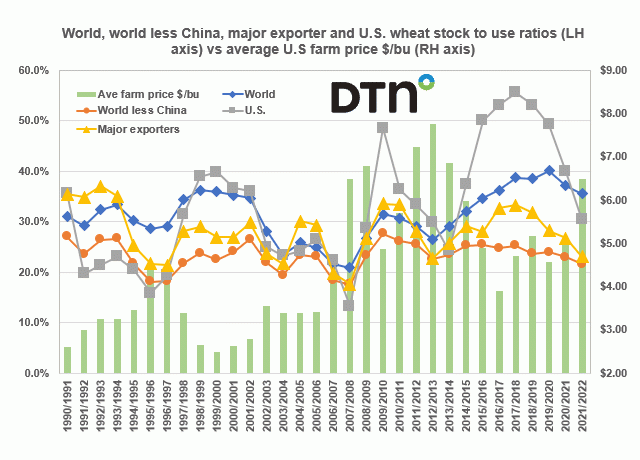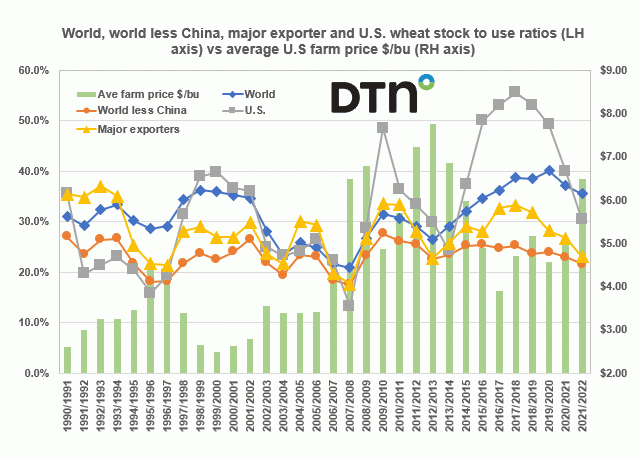Fundamentally Speaking
Wheat's Weather Woes
We had thought that the wheat numbers could generate the biggest fireworks in Thursday's crop production and WASDE reports and they did, but we didn't think USDA would be that aggressive in chopping global output and stocks as much as they did.
Give them credit as what looked like the most bearish of the grain and oilseed markets has turned into the most bullish one in little more than months' time.
P[L1] D[0x0] M[300x250] OOP[F] ADUNIT[] T[]
We have documented for weeks the woes that afflict the U.S hard red spring and durum crops but the U.S. white wheat crop, both spring and winter, have also been decimated as the Intermountain region and West Coast, where almost all the U.S. white wheat is grown, has had horrific weather all season and in many areas for years from extreme drought conditions and this issue has not been paid enough attention to.
U.S production pared by 1.40 million tons as our output this year is the lowest since 2002, but that reduction pales in comparison to Russia's production being slashed a huge 12.5 million tons to 72.5 million, while Canada's production was also gouged by 7.5 million tons to 24.0 million, which would be the smallest Canadian wheat crop since 2010/11.
Projected 2021/22 world ending stocks are lowered 12.6 million tons to 279.1 million with China accounting for 51 percent of the total.
That's no small consideration given that though the world wheat stocks-to-use ratio at 35.6% is the lowest since the 2015/16 season subtracting Chinese use and stocks, results in the world less China stocks-to-use ratio of 21.6% since 2007/08, when wheat futures went to all-time highs.
The U.S. stocks-to-use ratio itself at 30.4% is the lowest since the 2013/14 marketing year while the stocks-to-use ratio of the seven major exporting nations and regions (which includes Argentina, Australia, Canada, European Union, Russia, Ukraine, and the U.S.) is now pegged at 23.1%, the lowest since the 2012/13 season, the year the U.S saw its highest average farm wheat prices at $7.77 per bushel.
(c) Copyright 2021 DTN, LLC. All rights reserved.





Comments
To comment, please Log In or Join our Community .